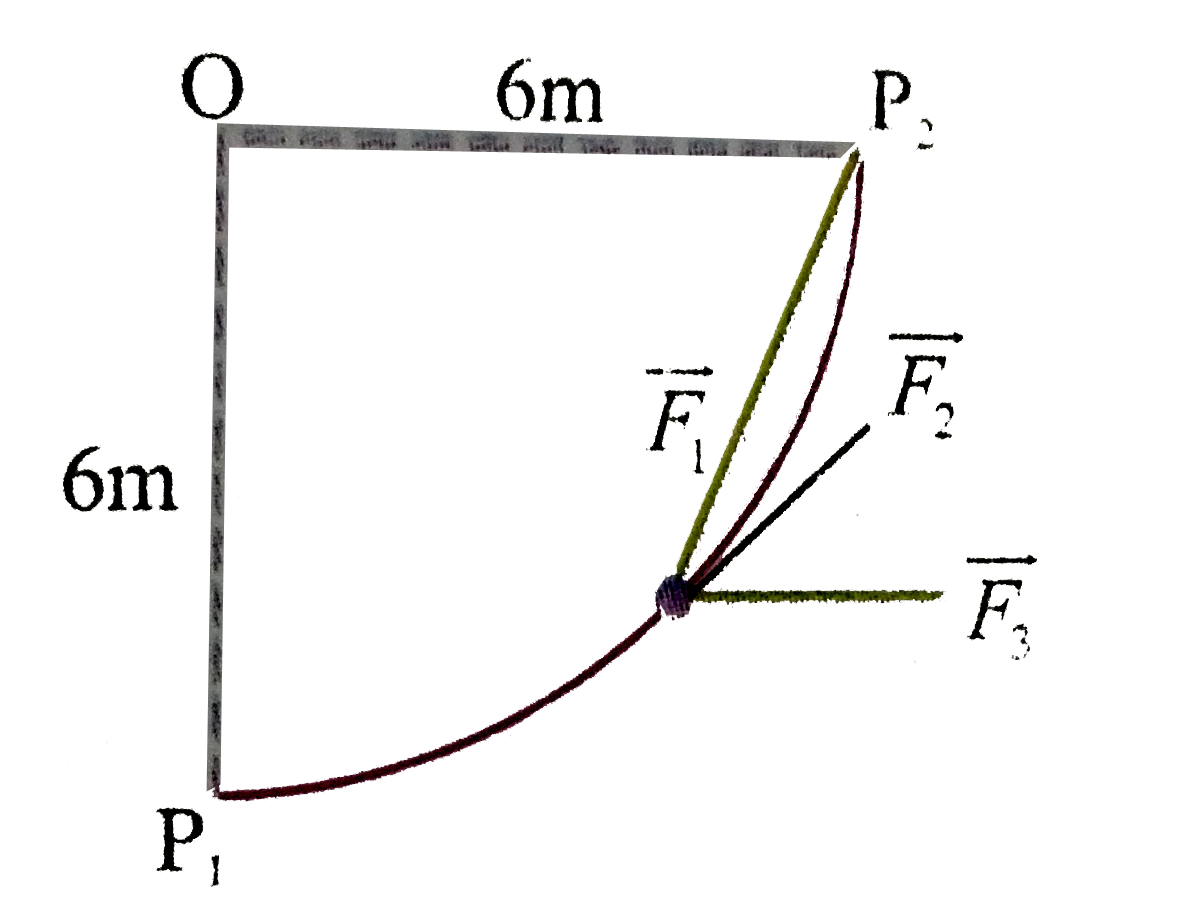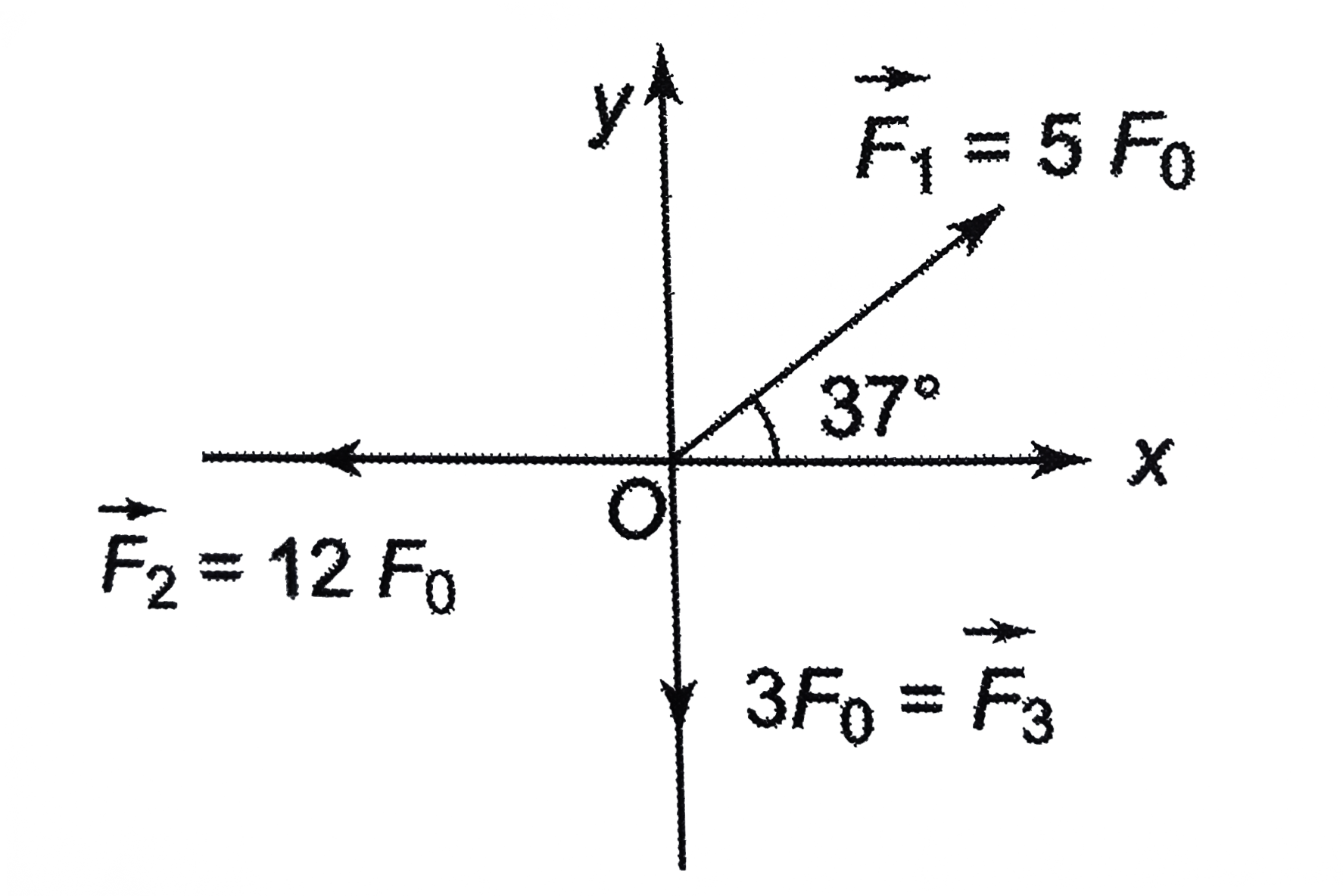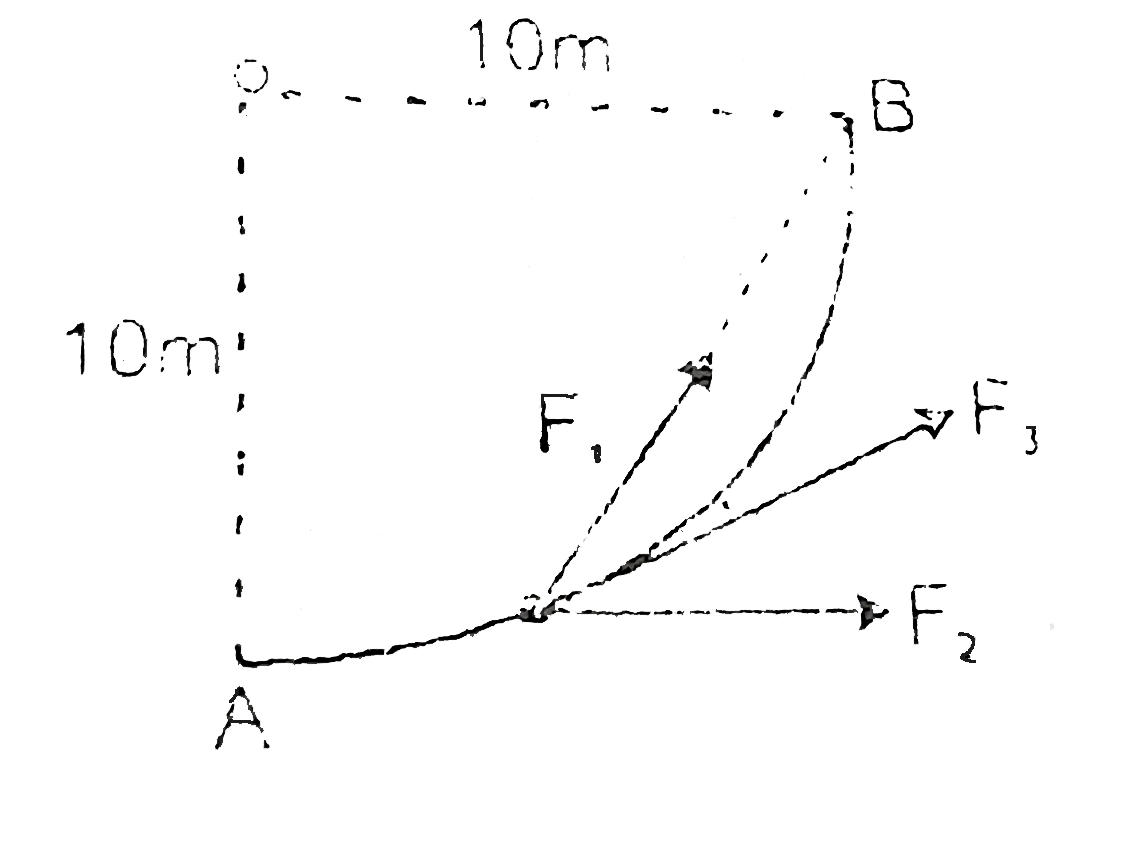Find magnitude and direction of →F2−→F1 if →F1=500N due east and →F2=250N due north:
Step by step video & image solution for Find magnitude and direction of vec F_(2)-vec F_(1) if vec F_(1)=500N due east and vec F_(2)=250N due north: by Physics experts to help you in doubts & scoring excellent marks in Class 11 exams.
Similar Questions
A particle, in equilibrium, is subjected to four forces →F1,→F2,→F3 and →F4, →F1=−10ˆk,→F2=u(413ˆi−1213ˆj+313ˆk),→F3=v(−413ˆi−1213ˆj+313ˆk),→F4=w(cosθˆi+sinθˆj) then find the values of u,v and w
View SolutionThe base vectors →a1,→a2,→a3 are given in terms vectors →b1,→b2,→b3, →a1=2→b1+3→b1−→b1,→a2=→a1−2→b2+2→b3,→a3=−2→b1+→b2−2→b3,if →F1=3→b1−→b2+2→b3, Express →F in terms of →a1,→a2,→a3
View Solution
Knowledge Check
- Question 1 - Select One or More
A smooth track in the form of a quarter circle of radius 6m lies in the vertical plane. A particle moves from P1 to P2 under the action of forces →F1,→F2 and →F3 Force →F1 is 20N, Force →F2 is always 30N in magnitude. Force →F3 always acts tangentiallly to the track and is of magnitude 15N. Select the correct alternative (s) :
 .AWork done by →F1 is 120JBWork done by →F2 is 180JCWork done by →F3 is 45πJD→F1 is conservative in nature.
.AWork done by →F1 is 120JBWork done by →F2 is 180JCWork done by →F3 is 45πJD→F1 is conservative in nature. - Question 2 - Select One
Find the resultant of the following two vector →A and →B.
→A:40 units due east and , →B:25 units 37∘ north of westA25 units 37∘ north of westB25 units 37∘ north of eastC40 units 53∘ north of westD40 units 53∘ north of east - Question 3 - Select One
Two forces →F1=500N due east and →F2=250N due north have their common initial point. →F2−→F1 is
A250√5N,tan−1(2)WofNB250N,tan−1(2)W of NCZeroD750N,tan−1(3/4)NofW
Find the resultant of −→F1+−→F2−−→F3(sin37∘=35,cos37∘=45)
 View Solution
View SolutionA smooth track is in the form of a quarter circle of radius 10 m lies in the vertical plane. A bead moves from A and B along the circular track under the action of forces →F1,→F2 and →F3 Force →F1 acts always towards point B and is always 20 N in magnitude Force →F2 always acts horizontally and is always 25 N in magnitude. Force →F3 always acts tangentially to the track and is of constant magnitude 10 N. Select the correct answer.
 View Solution
View SolutionA force F1, of magnitude 2.0N and directed due east is exerted on an object. A second force exerted on the object is F2=2.0N, due north. Wha tis the magnitude and direction of a third force, F3, which must be exerted on the object so that the resultant force is zero ?
View SolutionTwo coaxial solenoids of different radius carry current I in the same direction. −→F1 be the magnetic force on the inner solenoid due to the outer one and −→F2 be the magnetic force on the outer solenide due to the inner one. Then
View SolutionFive forces →F1,→F2,→F3,→F4 , and →F5 , are acting on a particle of mass 2.0kg so that is moving with 4m/s2 in east direction. If →F1 force is removed, then the acceleration becomes 7m/s2 in north, then the acceleration of the block if only →F1 is action will be:
View Solution
